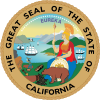Alquist Priolo Special Studies Zone Act
| Alquist Priolo Special Studies Zone Act | |
|---|---|
| California State Legislation | |
| Full name | Alquist-Priolo State Special Studies Zone Act |
| Status | Passed |
| Signed into law | December 22, 1972 |
| Sponsor(s) | Alfred E. Alquist and Paul V. Priolo |
| Governor | Ronald Reagan |
| Code | Public Resources Code |
| Resolution | SB 520 |
| Associated bills | Amended 1974, 1975, 197, 1979, 1991, and 1993 |
| Website | ftp://ftp.consrv.ca.gov/pub/dmg/pubs/sp/Sp42.pdf On p. 22 |
The Alquist-Priolo Earthquake Fault Zoning Act was signed into California law on December 22, 1972 to mitigate the hazard of surface faulting to structures for human occupancy.
The act in its current form has three main provisions:
1) It directs the state's California Geological Survey agency (then known as the California Division of Mines and Geology) to compile detailed maps of the surface traces of known active faults. These maps include both the best known location where faults cut the surface and a buffer zone around the known trace(s);
2) It requires property owners (or their real estate agents) to formally and legally disclose that their property lies within the zones defined on those maps before selling the property; and
3) It prohibits new construction of houses within these zones unless a comprehensive geologic investigation shows that the fault does not pose a hazard to the proposed structure.
The Act was one of several that changed building codes and practices to improve earthquake safety. These changes are intended to reduce the damage from future earthquakes.
Earthquakes happen when two blocks of the Earth's crust move relative to one another. The place where the blocks meet is called a fault, and faults tend to show up as relatively straight lines on maps. Any structure built directly on top of the fault will be torn in two when the blocks move. It's not easy to build a building that can withstand this sort of movement (often several feet in a matter of seconds), so it is best to avoid building directly on top of an active fault.
Buildings built before 1972 may still lie on top of active faults, and those buildings can remain where they were originally built unless they undergo a major remodel where more than 50% of the building changes. When that happens, they are treated the same as new construction (a geologic investigation must be undertaken and the hazard mitigated before a building permit can be issued).
While the Act mandates that owners disclose the fact that their property lies within the Alquist-Priolo zone when they sell it, there are no legal requirements to disclose the fact to renters living on the property. Renters should investigate the location of active faults on their own before signing a lease or rental agreement.
Legally, the Act only applies to structures for human occupancy (houses, apartments, condominiums, etc.). However, the official geologic maps delineating the fault zone are used to help place a variety of structures on safe ground. For example, the development Belmont Learning Center, a large school complex, in Downtown Los Angeles by the Los Angeles Unified School District (LAUSD) was complicated by discovery of a surface fault on the property in 2002. The LAUSD was required to remove a building that had been built directly atop the fault prior to its discovery.
...
Wikipedia

